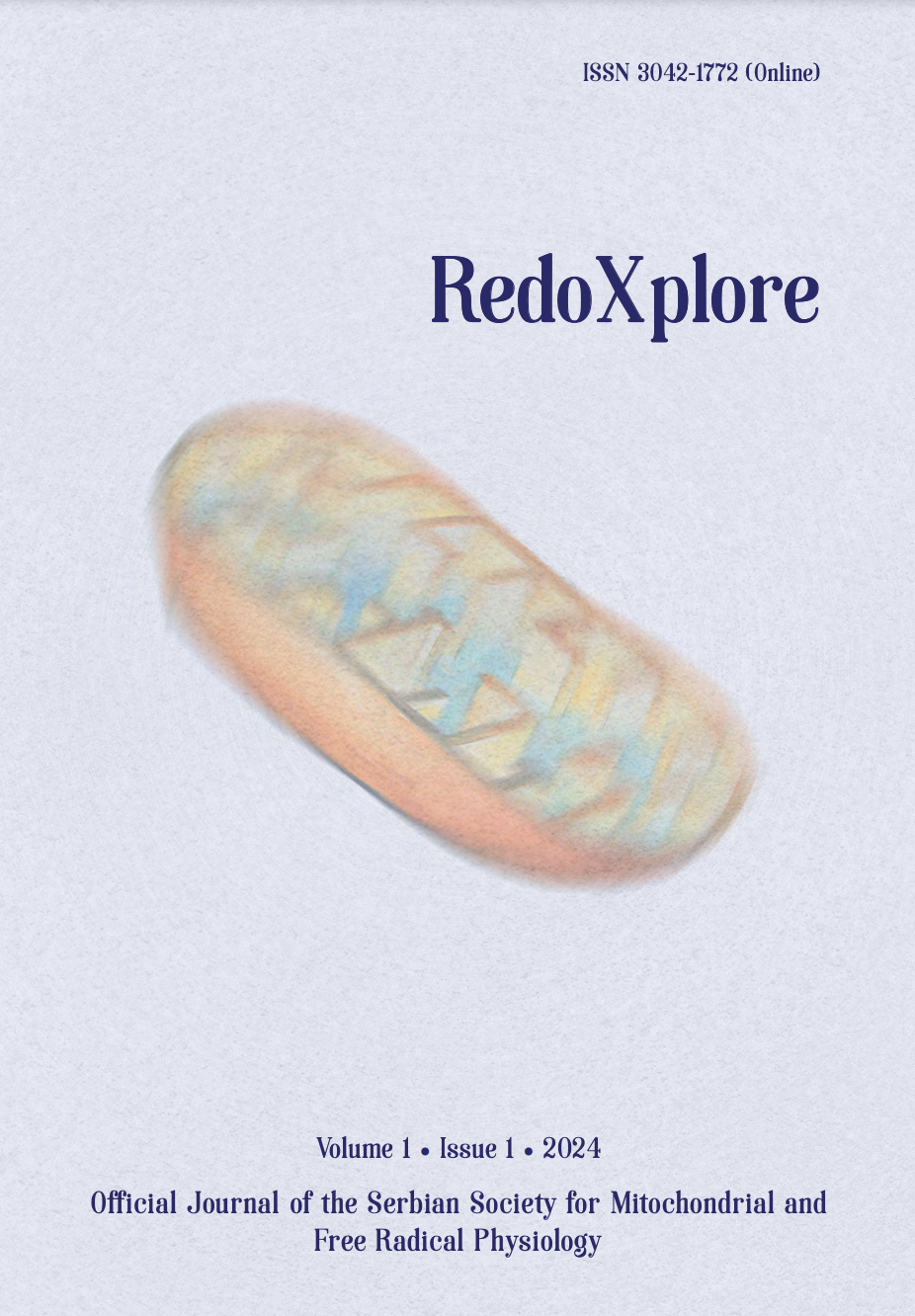
More articles from Volume 1, Issue 1, 2024
REDOX AND METABOLIC REPROGRAMMING OF BREAST CANCER CELLS AND ASSOCIATED ADIPOSE TISSUE - THE CORNERSTONES OF ADAPTIVE TUMOUR BEHAVIOUR
INSULIN MODULATES MITOCHONDRIAL STRUCTURAL AND FUNCTIONAL MOSAICISM IN BROWN ADIPOCYTES
NITRITE MITIGATES OXIDATIVE BURST IN ISCHEMIA/REPERFUSION IN BRAIN SLICES
NITRIC OXIDE, SUPEROXIDE AND PEROXYNITRITE – REDOX REGULATION OF THE CARDIOVASCULAR SYSTEM BY NITRO-OXIDATIVE STRESS AND S-NITROS(YL)ATION
DIETARY NITRATE AS PIVOT ON THE GUT MICROBIOTA-HOST REDOX COMMUNICATION
DIFFERENT DEGREES OF OXIDATION CAUSE DIFFERENT CELL TRANSFORMATIONS AND FORMATION OF MICROPARTICLES
Department of Cell Mechanisms of Blood Homeostasis, , Sechenov Institute of Evolutionary Physiology and Biochemistry of the Russian Academy of Sciences , Saint-Peterburg , Russia
Institute of Biomedical Systems and Biotechnology , Saint-Peterburg , Russia
Department of Cell Mechanisms of Blood Homeostasis, Sechenov Institute of Evolutionary Physiology and Biochemistry of the Russian Academy of Sciences , Saint-Peterburg , Russia
Saint-Petersburg State University , Saint-Peterburg , Russia
Department of Cell Mechanisms of Blood Homeostasis, Sechenov Institute of Evolutionary Physiology and Biochemistry of the Russian Academy of Sciences , Saint-Peterburg , Russia
Laboratory of Ecological Immunology of Aquatic Organisms, A.O. Kovalevsky Institute of Biology of the Southern Seas of the Russian Academy of Sciences , Sevastopol , Russia
Department of Cell Mechanisms of Blood Homeostasis, Sechenov Institute of Evolutionary Physiology and Biochemistry of the Russian Academy of Sciences, , Saint-Peterburg , Russia
Editor: Bato Korac
Published: 29.08.2024.
Short oral presentations
Volume 1, Issue 1 (2024)
Abstract
Oxidative stress (OS) has a significant impact on the lifespan and physical fitness of living organisms. It is commonly associated with ageing and can lead to changes in the functionality of red blood cells (RBCs). The precise mechanisms underlying these changes are not fully understood. Unlike mammals, avian RBCs have a nucleus and functional mitochondria that regulate the cellular response to oxidative stress. In this study, we examined the effects of OS on red blood cells from adult female quail (Coturnix japonica, n=12). We used flow cytometry to analyze the formation of OS-induced microparticles and RBC transformation. We also evaluated band 3 clustering and phosphatidylserine externalization at the cell surface using eosin-5-maleimide and Annexin-V fluorescent probes, respectively. In addition, we analyzed band 3 clustering using confocal microscopy. We used a laser diffraction-based method to analyze cell deformability, and we characterized hemoglobin species spectrophotometrically. We found that OS caused band 3 clustering, microparticle formation, and phosphatidylserine release onto the cell membrane. The microparticles formed under the influence of oxidants differed from those formed under the influence of A23187 (calcium ionophore). The rate of microparticle formation and the onset of osmotic rigidity depended on the oxidant concentration. Erythrocyte-derived microparticles contained hemoglobin oxidized to hemichrome (HbChr). Overall, these findings demonstrate that avian erythrocytes undergo different processes during oxidative stress, depending on the level of oxidation. These differences are due to variations in cellular transformations and the formation of different types of microparticles. This research was supported by the Russian Fund for Basic Researches (grant no. 23-15-00142)
Citation
Copyright

This work is licensed under a Creative Commons Attribution-NonCommercial-ShareAlike 4.0 International License.
Article metrics
The statements, opinions and data contained in the journal are solely those of the individual authors and contributors and not of the publisher and the editor(s). We stay neutral with regard to jurisdictional claims in published maps and institutional affiliations.






